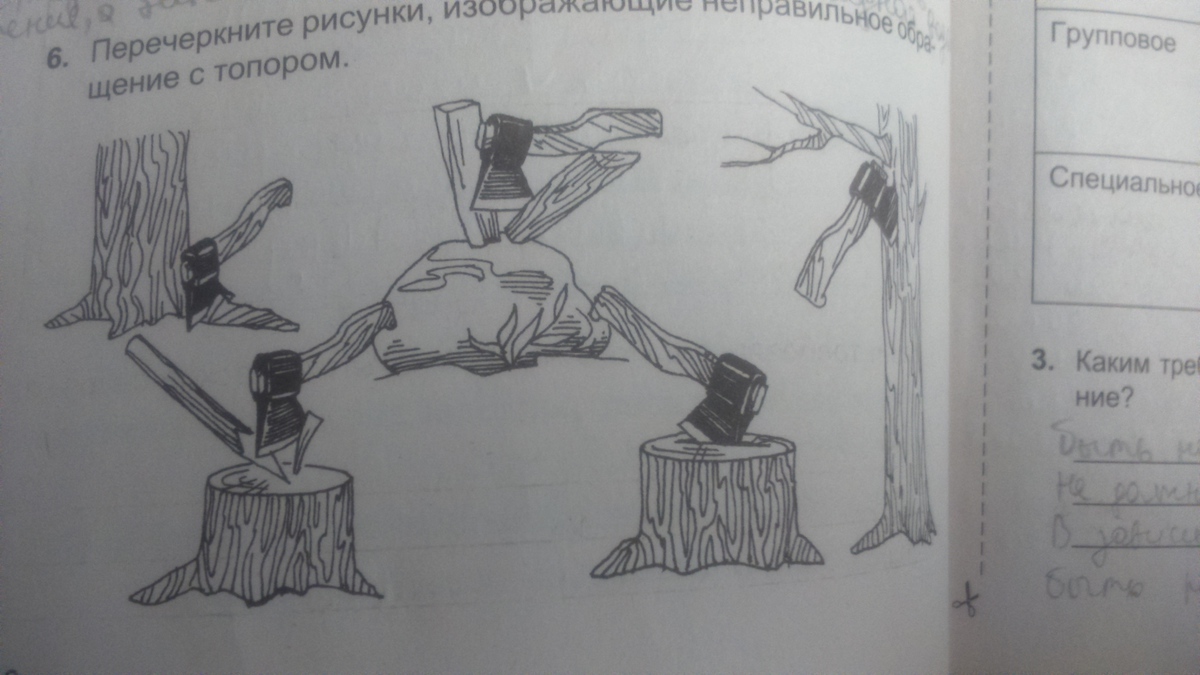Предмет: Другие предметы,
автор: Катеринка1611
перечеркните рисунки изоброжающие неправельное обращение с топором
??
Приложения:

Катеринка1611:
помогите????????(((((((((((((((((((((((
Ответы
Автор ответа:
3
всё не правильно, кроме где пень, а над ним топор
спасибо) это правельный который снизу рисунок один?
да
Похожие вопросы
Предмет: Английский язык,
автор: GreenDeath9985
Предмет: Английский язык,
автор: Karina11222
Предмет: Русский язык,
автор: argishti578
Предмет: Английский язык,
автор: dashaswimlove11
Предмет: Английский язык,
автор: dariakluch